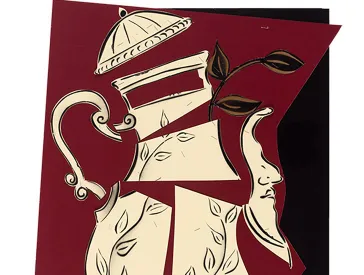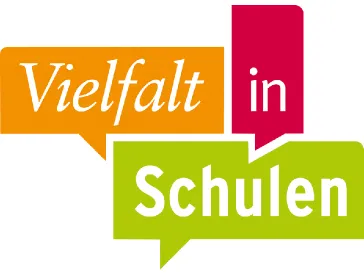Film as a Method in Anti-Discrimination Education
Working Group Report
What opportunities do educational film projects offer when it comes to raising awareness of discrimination and labels? How can they motivate students to engage with different ideas about life? What methods promote “multiperspectivity”?
On the basis of experiences with the history workshop of the Jewish Museum Berlin and the youth trip to Israel/Palestine organized by BildungsBausteine gegen Antisemitismus (Educational Strategies against Antisemitism), we discussed the potential offered by film projects for anti-discrimination education. Fabian Schnedler moderated the working group with contributions by:
- Gunnar Meyer, BildungsBausteine gegen Antisemitismus (Educational Strategies against Antisemitism), Berlin
- Vera March Berg, Refik Veseli School, Berlin
Anti-discrimination education refers to educational work based on the assumption that participation in society is difficult or impossible for certain individuals and groups to attain and that these individuals and groups are subject to various forms of structural and day-to-day discrimination. These problems are taken into account in the selection of educational methods, structures, and topics and are the focus of the educational work. A critical look at social power relations and inequality is the pillar of this understanding of education.
Vera March-Berg and Fabian Schnedler: What Opportunities Do Film Projects Offer for Anti-Discrimination Education?
The Jewish Museum Berlin has offered a history workshop at the Refik Veseli School since 2012. It is organized with the school’s teachers and offered as an elective. In the project, we have had very positive experiences working with and producing films. Film is an effective tool for addressing, discussing, and studying discrimination.
Many young people and adults interact with motion pictures on a daily basis. Film projects offer participants the opportunity to try out film as a means of expression themselves – i.e., become acquainted with cinematic language through the analysis or production of films (“media literacy”). A distinction must be made between projects that work creatively with completed films (see the brochure Film ab! Clips gegen Antisemitismus [Take One: Clips against Antisemitism]) and projects in which participants make films themselves.
The project in question took a participatory approach by assigning tasks and roles to individual students when the history workshop film was made (camera, sound, script, interview questions, etc.). By involving students in the selection and visual implementation of topics, we ensured that the finished production truly was a student film.
A top priority was developing the content. The starting point was different forms of discrimination and discriminatory structures. Students chose an aspect of discrimination that they found particularly interesting. A central question was, “What do you want to talk about and show in the film?” The resulting documentary X-Berg, mein Name (X-Berg, My Name) – which focused on Jews and Muslims living in the district of Kreuzberg in Berlin – offered students the chance to learn about different perspectives and show these perspectives in the film (“multiperspectivity”). Students explored different attitudes and experiences of home, discrimination, religiousness, sexuality, and love.
A major pitfall appears to be the desire for the “perfect” film. Due to this perfectionism, the individual film as a product tends to become more important than the learning process with the participants. The privacy rights of all participants need to be considered and respected. Classifications and labeling by the educators (“projective othering”) should be reflected on, and different experiences of belonging should be discussed with the participants.
Gunnar Meyer: The Potential and Pitfalls of Educational Work with Media
Drawing on practical experiences, I would like to present two approaches to using film in anti-discrimination education. I will compare them and describe the opportunities they offer and their pitfalls.
Over the past three years, BildungsBausteine gegen Antisemitismus (Educational Strategies Against Antisemitism) has had very positive experiences with the pilot project Film ab – Medienseminare gegen Antisemitismus (Take One – Media Seminars against Antisemitism), which was carried out in cooperation with the Konradshöhe Youth Education Center. During a weeklong project, the young people studied antisemitism, developed a script based on the aspects of antisemitism they found most important, made a short film or interview, and edited the material into a video clip. The focused, location-specific work atmosphere was one of the positive aspects of this approach. The participants referred back to the previous day’s discussions and experiences, which ensured a continuous development and reflection process. The short, highly structured timeframe also spurred them on. One pitfall was the high degree of advance structuring. During the first two days, this made it impossible to delve more deeply into all the participants’ suggestions and questions.
To illustrate the second approach, I would like to point to the workshop held in 2012 by BildungsBausteine gegen Antisemitismus at the Refik Veseli School in Kreuzberg. In contrast to the weeklong project, this workshop allowed the educators to respond to the participants’ questions and ideas in greater depth. The students’ engagement with topics such as discrimination, antisemitism, and the Middle East conflict culminated in an educational trip to Tel Aviv and Berlin, funded by the EVZ Foundation.
In the course of the project, which ran for more than a year, the students produced the documentary Verkehrte Welt (Topsy-Turvy World), which documents the trip to Israel and the participants’ experiences and explores the central topic of gender relations. In the film, gender perspectives are reversed and the actors and actresses have the opportunity to feel their way into the opposite sex’s roles. In the mutual interviews at the end, the participants critically reflect on their own gender roles and place them in a social context.
Conference Documentation: Schools and Museums Conference Working Groups (19)



